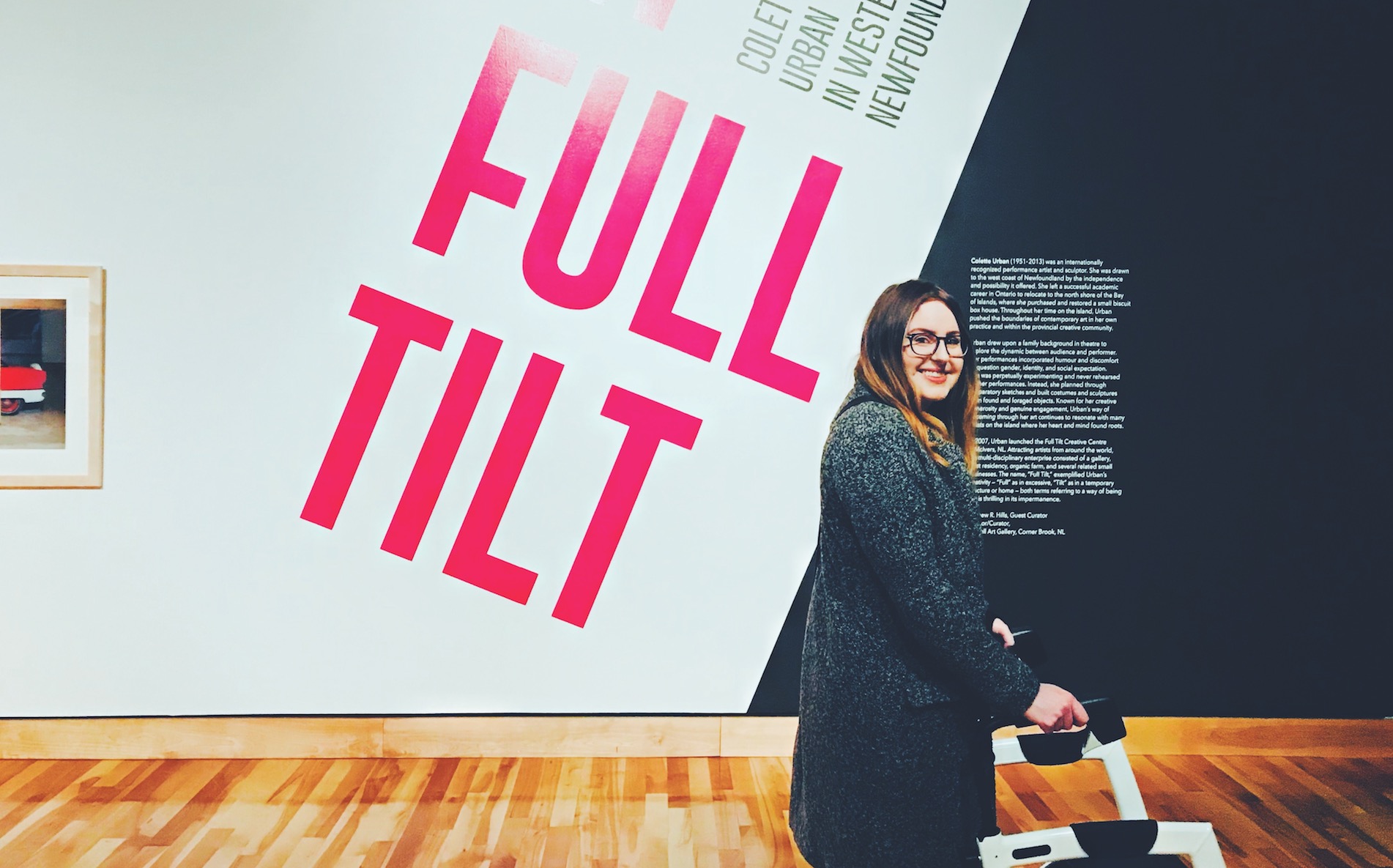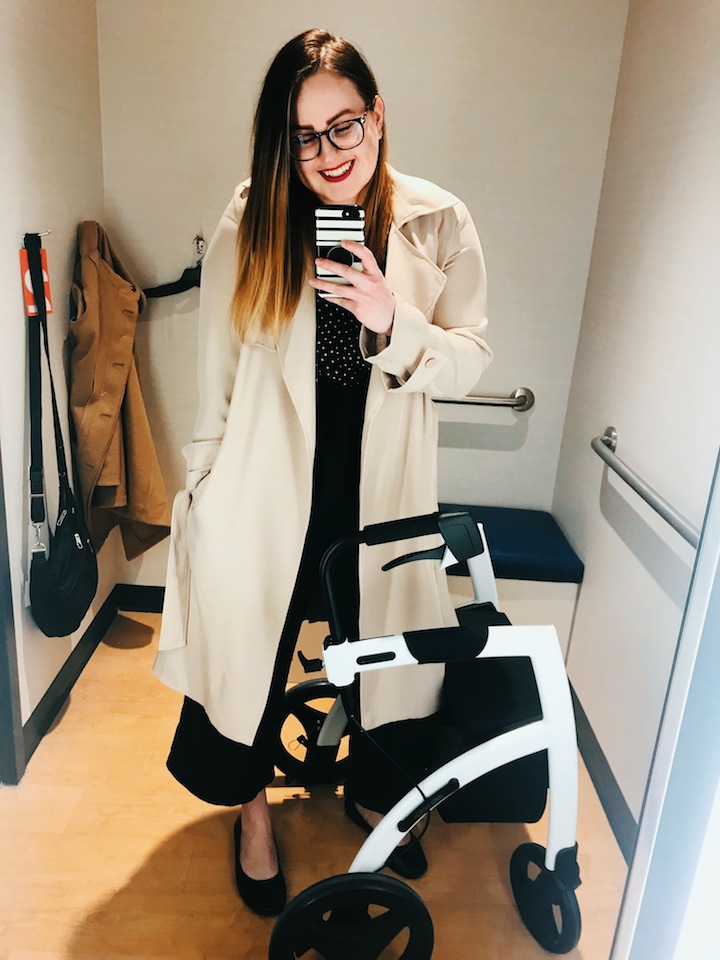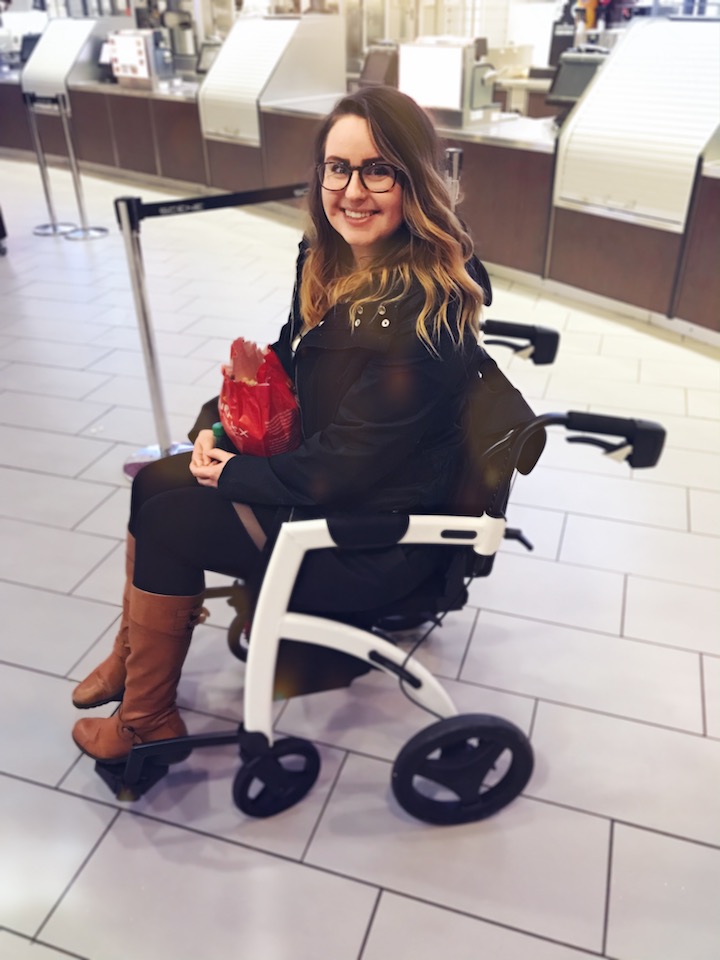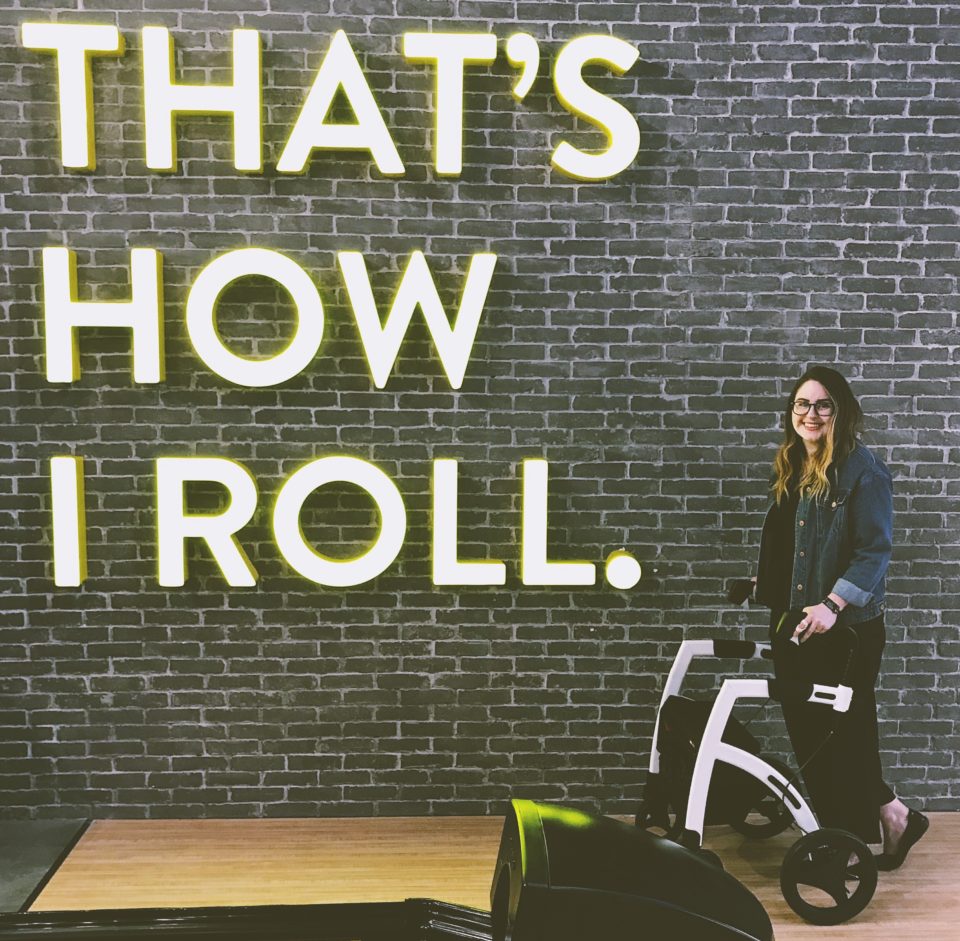I have Ehlers-Danlos Syndrome. There’s a pretty big chance that you don’t know what Ehlers-Danlos Syndrome is. But don’t worry, I won’t hold that against you.
There are plenty of times when I say the name of my disease to nurses or doctors and they just look at me like I’m speaking a foreign language and then ask me how to spell it.
Not many people talk about Ehlers-Danlos Syndrome. I certainly don’t fall into that category, though. I could talk your ear off about it! And May is Ehlers-Danlos Syndrome Awareness month, so I can’t think of a better time to raise a little awareness by sharing my experiences with EDS and explaining how much it affects my life.
And as a shining example of how greatly it impacts me, I will start by letting you know that I began writing this over 2 weeks ago but I’m still here, on the first paragraph, because EDS loves to get in the way of plans we make for ourselves.
*Nap break*
Because I am not a medical professional, I am going to give you a definition of Ehlers-Danlos syndrome that I have copied from ehlers-danlos.com (a great resource for those of you looking to find out more about EDS). “The Ehlers-Danlos syndromes are a group of connective tissue disorders that can be inherited and are varied both in how they affect the body and in their genetic causes. They are generally characterized by joint hypermobility (joints that stretch further than normal), skin hypertextensibility (skin that can be stretched further than normal), and tissue fragility.” There are 13 subtypes of Ehlers-Danlos syndrome, some of which can affect your vascular system and organs.
I have been clinically diagnosed with hypermobile Ehlers-Danlos syndrome (hEDS). I’ve been waiting 2 years to see a geneticist to confirm the subtype, but all signs point to hEDS. There is a suspected defect in my collagen, which is basically the glue that holds everything in your body together.

The biggest ways that hEDS affects me are: it makes my joints and tendons hyperextend and dislocate (I have dislocated my shoulder just by high-fiving my husband for doing the dishes), which in turn causes me lots of joint pain, muscle weakness and spasticity; it makes me feel a lot of fatigue on a very regular basis (I can’t begin to tell you how much I love naps); I get bad muscle weakness in my throat and vocal cords; I have digestive problems associated with it; I can get dizzy and an increased heart rate when I stand up sometimes (and then I promptly fall over); and occasionally I can get pretty bad brain fog which makes it hard to string together sentences (which is why this blog post has taken me approximately fifteen years to write).
I’m trying to think of an aspect of my life that hasn’t been changed by the onset of my Ehlers-Danlos syndrome and I honestly can’t think of anything. It’s always there, but not in a nice, supportive kind of way. I presumably have had hEDS my entire life, and when I look back I can see signs of it throughout the years: sprained ankles, crushing fatigue after playing a sport, having to tape my pen to my hand so I could hold it long enough to write my exams in university.
 But, only in the last few years has it progressed enough and brought about enough symptoms for a diagnosis to be made. And now, hEDS affects my ability to walk, talk, work, and have fun. Some days are better than others, but even on the good days I am usually still affected by it.
But, only in the last few years has it progressed enough and brought about enough symptoms for a diagnosis to be made. And now, hEDS affects my ability to walk, talk, work, and have fun. Some days are better than others, but even on the good days I am usually still affected by it.
It’s important for me to note that, like many chronic illnesses, EDS affects everyone differently – so my story will likely be very different from the next person who tells you they have EDS. Some people get very severe symptoms, and some people aren’t badly affected at all.
In my case, it’s been almost 3 years now since I have been able to work. It’s been about a year since I’ve even left my house on my own. EDS causes my body to be very unpredictable to me. I can wake up feeling great, and ten minutes later I can be too weak to walk from my kitchen to my bedroom. I can be making progress with physical therapy and building up strength around a certain joint, and then before I know it I can dislocate it again and have to start over.
My shoulders, hips, and knees are extremely unstable so I can be going about my day minding my own business and then bam, my hip is out and I’m waddling around the house like a penguin. My mobility can honestly change 20 times in a single day. That can make it hard to plan ahead for things like work, volunteer commitments, or hanging out with friends.
*Another nap break*
I often say that hEDS has taken away my ability to be spontaneous because so much planning has to go into me being able to leave the house to do a thing. For years I was using canes and several different types of crutches, but my needs were changing so quickly that I couldn’t keep up with what mobility aid I needed to use when. I couldn’t leave the house with approximately seventy-five different mobility aids because I only have two hands (and they aren’t great at holding even one!). I felt it was time to try something different, to see if I could gain some sense of freedom back.
Several months ago, a dislocated tendon in my left arm (which is STILL dislocated) had me in a cast from my fingers to above my elbow, and I realized that using two crutches wasn’t an option anymore. So it was time. I got myself a Rollz Motion, the Transformer of the mobility aid world. I unpacked it, and my life definitely changed for the better. I now have a mobility aid that can change back and forth as often as my joints pop in and out place (which is very, very often).
If I feel up to walking, I can walk using the help of the rollator. If I need to have a little sit down while waiting in lines or if my legs just need a break, I can sit on the padded bench. If I’m going a longer distance and my legs are like “hahaha, there’s no way we’re helping you out with this one!” then I can switch it to the wheelchair and get pushed by my husband or a friend (and then I embarrass them by saying “wheeeee” every time they take a turn).
 It also serves as a very sturdy and reliable dessert tray when I don’t have the ability to carry my cake from room to room in my house but I want the option of eating cake throughout the day. I wish I was joking about that, but this girl really loves cake.
It also serves as a very sturdy and reliable dessert tray when I don’t have the ability to carry my cake from room to room in my house but I want the option of eating cake throughout the day. I wish I was joking about that, but this girl really loves cake.
I’m also going to give a shoutout to the pouch under the seat – it is a perfect snack pouch. The Rollz has made my life with EDS so much better, and not just because of it’s travelling snack pouch. My body is still unpredictable, but I feel a lot less anxiety when I leave the house now, because I know there’s a fail safe in the form of the transport chair that I can use if my legs start acting like divas.
The Rollz Motion feels like a really big step forward for someone like me with the type of disease that I have. It’s extremely refreshing to know that companies producing mobility aids are now starting to pay closer attention to the fact that disability can be fluid and some of us need more than just one option when we leave the house.
“There is no cure for EDS, but there are lots of things that can be done to help make life easier”
And while it’s very promising that companies like Rollz International are working harder to understand the needs of people with diseases like EDS, it’s now time for medical professionals to also step up and pay more attention to us. It took me about 10 years from when I first started feeling sick and tired, to a doctor saying “oh, what about EDS?”
That was ten years of misdiagnoses, wrong medications, and ten years of missing out on the specific occupational therapy and physical therapy that could have helped keep my joints more stable for longer. Ten years of trying to push through the pain instead of taking advantage of tools created for disabled people to live our lives more easily and less painfully.
Ehlers-Danlos Syndrome is considered a rare disease, but it’s prevalence isn’t actually that rare. As many as 1 in 5,000 people have hEDS. The rare aspect of EDS falls more on the shoulders of the medical community rarely knowing anything about it. Very few doctors seem to be educated on Ehlers-Danlos Syndrome enough to spot the symptoms and diagnose the syndrome.
That’s why an awareness month is so important! The more we talk about EDS, the symptoms, and it’s impact on our lives, the more medical professionals will know the name of this disease and understand why it’s so important to diagnose it sooner. There is no cure for EDS, but there are lots of things that can be done to help make life easier for those of us who live with it. And all of that starts with a quicker diagnosis.
If you’d like to learn more about Ehlers-Danlos Syndrome, please check out these online resources: https://www.ehlers-danlos.com , https://www.ehlers-danlos.org
This blog post was written by Lisa Walters, a chronic illness and disability blogger from Canada, also known as Damsel in a Dress. Through her blog and Instagram account, Lisa not only wants to raise awareness about EDS but also connect people of this community, in an attempt to show that they are not alone.
